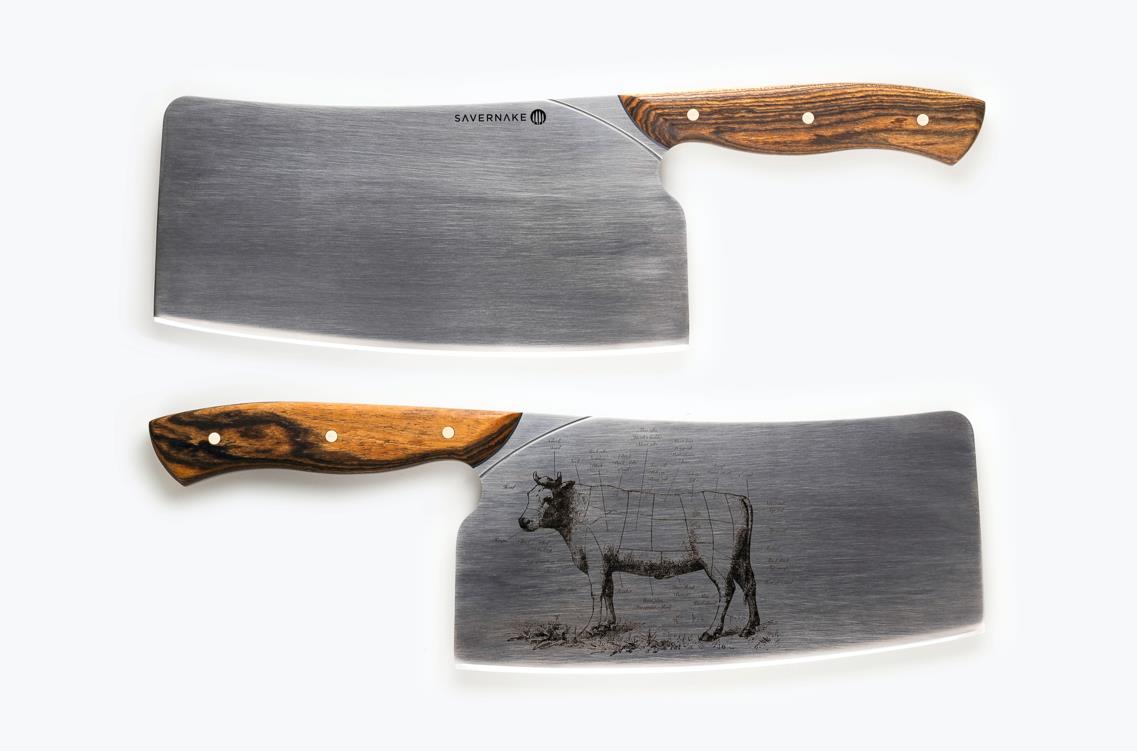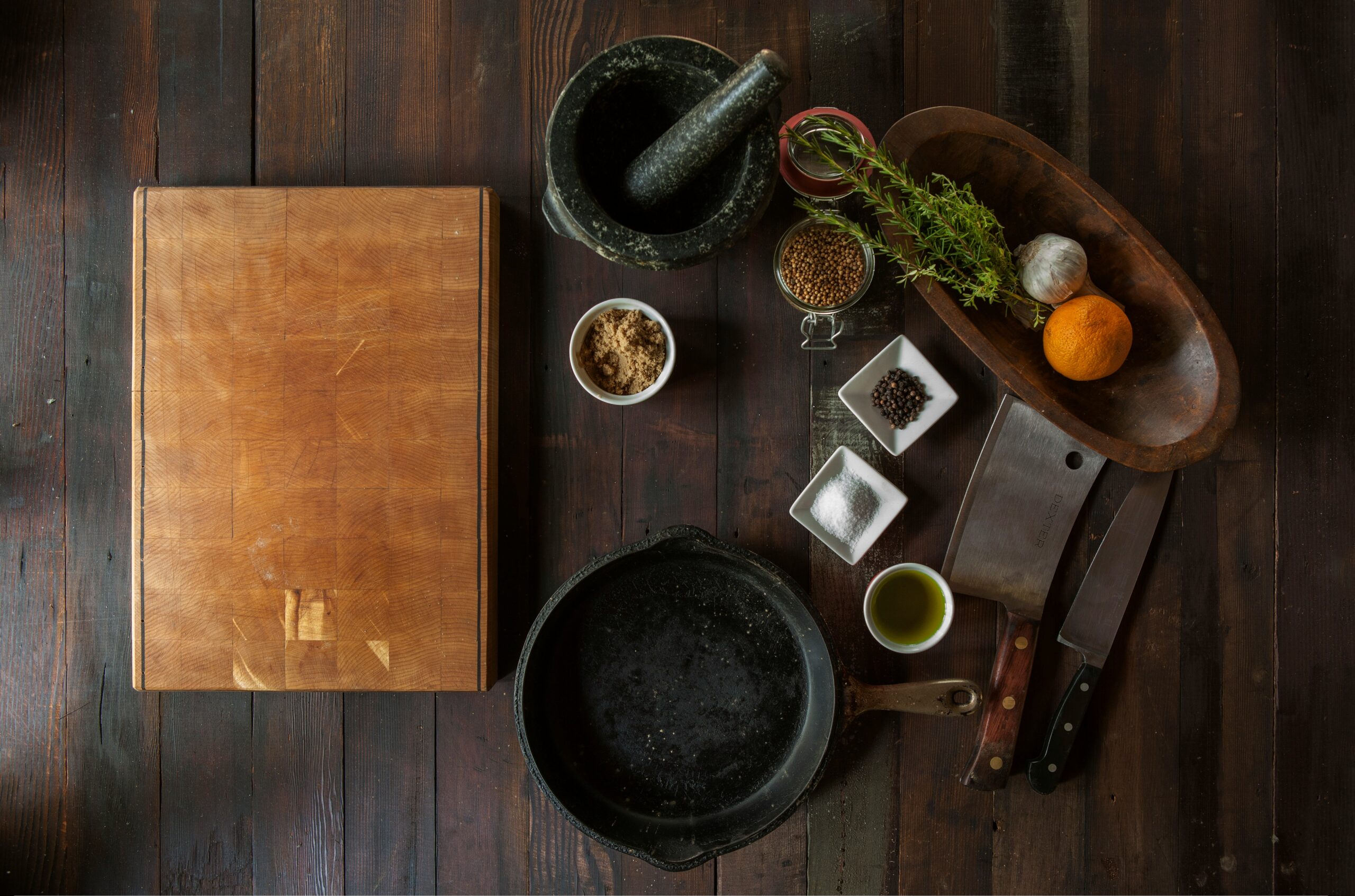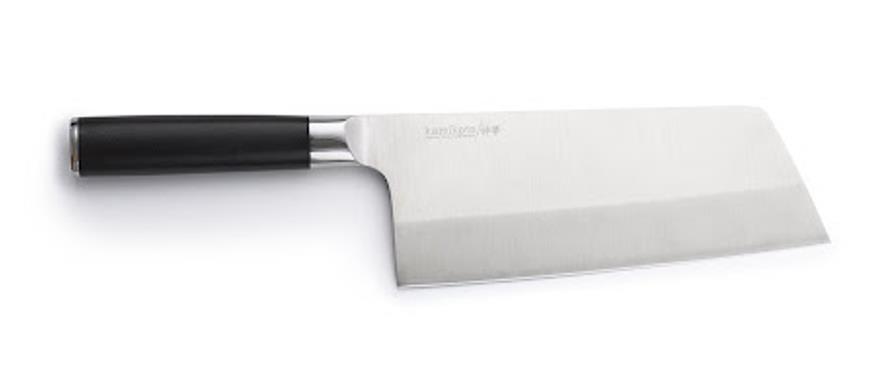Imagine having a knife that does it all – no more juggling between different blades! Meet the Caidao, your ultimate kitchen companion, ready to rescue you from tedious knife work.
The caidao, known as the Chinese cleaver, works in a similar way to a chef’s knife in Western culture. It resembles a regular cleaver with a large, rectangular blade. It has a thinner blade than the meat cleavers and is more versatile. It can mince, chop, dice, and slice everything from fruits, vegetables, to meat and fish.
To fill your curiosity about the power of Chinese knifework holy grail, we will equip you with everything you need to know about Caidao. In this article, we’ve listed down its uses, how the knife performs, and how to take care of it. Read on.
Table of contents
What is a caidao?
It might seem simple to just buy the first Chinese cleaver you see. But there are certain features that separate a great Caidao from the good ones. As we get to the nitty-gritty, you will realize how the subtle details in a Caidao would make you fall in love with it.
Origin
The term caidao came from the Chinese characters cai (“vegetable”) and dao (“knife”). The Cantonese also called the knife a choi dou with the same meaning.
The Chinese cleavers originated in China. Other Asian countries like Vietnam and Cambodia also adapted the knife. The Japanese, in particular, made their own version of caidao in the 19th century, and named it the Chukabocho.
What Makes Caidao Outstands among other knives?
What makes Caidao stand out among other knives?
Versatile Precision:
It boasts a thinner blade than traditional meat cleavers, allowing precise slicing, chopping, and mincing of various ingredients. Its rectangular shape and curved edge offer superior control and leverage, making it ideal for handling everything from delicate herbs to tough meat and bones.
Efficient Non-Stick Design:
Unlike Western knives, the Caidao’s flat or hollow-ground edges reduce friction, preventing food from sticking during cutting. This innovative feature streamlines kitchen tasks, enabling smoother and faster chopping and slicing. Cooks can effortlessly glide through ingredients, saving time and enhancing efficiency.
Durable, Low Maintenance:
With full tang construction and rust-resistant materials, the Caidao knife ensures unmatched durability and minimal upkeep. Compared to Western knives requiring frequent sharpening, the Caidao’s sturdy build and resilient materials offer consistent performance. It’s a reliable tool for both home cooks and professional chefs, promising enduring quality and convenience in the kitchen.
Main features

Each feature of the Chinese cleaver has an important function. Combined, it makes the knife perform different cutting tasks in the kitchen. Here are the following.
Blade shape
A caidao’s blade resembles that of a standard meat cleaver. It is rectangular in shape, with a cutting edge that has a slight curve at the belly. Caidao have thinner blades than Western meat cleavers but are heavier at the tip.
Blade dimensions
The blade of a Chinese cleaver measures between 3 to 5 inches tall. There are many caidao that have 7 inches long blades in the market. You can also find different blade lengths up to 10 inches.
Tang
A knife’s tang is the part of the blade that goes in the handle. Knives either have full or partial tangs. With full-tangs, the blade extends as long as the knife’s handle.
Partial tangs, as the name suggests, only extend a part of the blade in the handle. Full-tang knives, on the other hand, are generally more durable than partial-tangs. This is because of the stronger connection of the blade to its handles. Though, they are more expensive because of the extra steel used to make them full-tang.
Full-tang knives are also heavier than partial tang knives. With a bigger knife such as a caidao, the added weight on the handle helps you cut through more stubborn food.
Blade material
The majority of Chinese chef knives are carbon steel. This steel is harder but more brittle and more likely to rust. There are also blades made of stainless steel or mixed with alloys to prevent this problem.

Edge
Caidao usually have flat ground edges. There are also some with hollow-ground edges. Hollow-ground edges help reduce friction between the food and the blade. This, in turn, prevents the food from sticking to the blade as you cut through it.
Handle
The handle of a caidao often comes round and wooden, weighing lighter than that of a meat cleaver. Modern Chinese cleavers also come with metallic handles. The advantage of having metallic handles is being less prone to damages such as cracks.
The handles are also designed to compliment caidao’s lightweight design. Manufacturers also made handles with ergonomic functions to help with comfort and grip.
What is caidao used for?
A caidao is very versatile. With proper technique, grip, and practice, it can do more than what a kitchen knife does. Here are some of its uses:
- Slicing. Chinese cleavers are efficient for basic slices in vegetables, fruits, and meat.
- Chopping. Caidao chops meat and bones as long as they are not too tough.
- Shredding. You can also use your cleaver for shredding vegetables for different recipes.
- Dicing. Due to its thin blades, it works efficiently for dicing meat and other proteins such as tofu.
- Mincing. With practice, the caidao is great for mincing garlic and such.
- Removing scales of a fish. It is relatively easy to remove the scales of a fish with the caidao.
- Deboning chicken. Skilled chefs use Chinese cleavers to debone a chicken. Practice can help perfect the technique for home use.
- Tenderizing. Tenderize your meats by just pounding them with your knife’s spine. This is the unsharpened back of the blade.
- Using the flat surface. Other cooks use the flat surface of the cleaver for smashing and peeling garlic. They also use it for transferring/scooping food off the cutting board.
- The heel of the caidao is also useful for removing blemishes from vegetables and fruits.
- Crushing and grinding food can be an innovative use of the knife’s handle.
Caidao vs Chukabocho

The Chukabocho knife is the Japanese refinement of the caidao. The Japanese term means “Chinese vegetable cleaver”.
Similarities
Like the caidao, Chukabocho also features a double-beveled edge. They are both large and rectangular in shape and are both versatile knives. You can cut, chop, mince, and slice vegetables, fruits, herbs, ducks, fish, and meat with both knives.
Main differences
There isn’t much of a difference between a Chukabocho and a caidao except that the former uses traditional Japanese knife-forging technique.
Caidao vs Nakiri
Nakiri or Nakiri bouchou is a Japanese-style vegetable knife. It is a double bevel-edged, rectangular knife with a thin blade. With a blade that thin, you would expect the design to focus on cutting vegetables.
Similarities
A caidao and a Nakiri knife have similar rectangular blades and are good for slicing vegetables. Aside from this, there’s not much of a similarity between the two knives.
Main differences
The Nakiri is much thinner, lighter, and smaller than a caidao. This makes it easier to use but makes it harder to pierce through thicker meat without much effort. With a Nakiri, you also get a narrower blade with a straight edge.
With the caidao, you get a wider blade that is very useful for scooping food off the chopping board. Mastering a caidao requires skill and practice. But once you get the hang of it, the versatility of the knife will stand out.
In choosing a knife, you have to consider your cutting style. Ask yourself: do you prefer push cutting motions or sliding motions?
All in all, opt for a Nakiri if you prefer a light and easy-to-learn knife. If you’re looking for more usability and heftiness, the caidao will suit you.
Tips for using your caidao
- Practice holding your caidao properly. A good knife grip will help avoid straining your hand or wrist. For starters, you can try to learn the pinch-grip technique to hold your cleaver.
- Cutting techniques will make your life easier. You can try doing the push-cut method next time you do your knifework. It is the most common technique you can use with a cleaver, and is simple to do, too. Basically, you push down your knife to the material you’re cutting in a straight motion.
- Use the strength and sharpness of your knife. Since Chinese cleavers are hefty and sharp, they can easily pierce the surface of the food even with minimal effort. Your hand should be there only to guide your knife. Find a technique and angle that is most comfortable and efficient for you.
Taking care of your caidao

Through sharpening and consistent maintenance, a caidao can last up to a few decades. If you don’t take care of your knife, it might chip away as fast as mass-produced knives of average quality. Here are some tips for taking care of your caidao.
Cleaning
The most common way to clean your caidao is by using a towel or sponge to wipe down the blade and handle. You can also dampen it with warm soapy water. Make sure that you dry after cleaning to prevent rusting, too.
Remember that stainless steel is not 100% rustproof. Acidic ingredients can also speed up the deterioration of your knife. Regardless of what you cut, we recommend that you immediately clean your knife after use.
Sharpening
One of the responsibilities you have to take on when you own a delicate knife is its maintenance. With continued use of your knife, the cutting edge unavoidably gets dull over time. Sharpening your knife is one of the basic ways to take care of it.
When you sharpen your knife, you grind bits of the blade off so your knife will have sharp edges again. The most common tool to sharpen your knife is a whetstone. Some even use electric knife sharpeners, but traditional chefs avoid using these machines as they might damage the blade. Owners usually sharpen their knives only a few times a year, depending on how often they use their knives.
Handpicked for you
True cutting power in the palm of your hand
Storing
The most important part of your caidao is its blade. In storing your knife, you have to think of a way that prevents any damage to its handle or blade. You also have to consider your safety when moving around the kitchen. Here are some of the ways you can store your caidao:
- Wall-mounted magnets. Wall-mounted magnets provide an aesthetic look and easy access for your knives. You also don’t have to worry about fitting your knife since you just have to magnetically hang it on the wall.
- Knife blocks / knife racks. If you’re not comfortable to have sharp knives dangling on your wall, knife racks come to your aid. But you might struggle to find a perfect fit for your knife especially if your knife is not standard in size.
- Protective sheaths. Sheaths offer protection from possible injuries and portability.
Should you buy a caidao?
Caidao is a great part of Chinese culinary history. Their versatility helped them survive and be part of our kitchens today. If you spend a lot of time cooking, you should try out a knife that saves you time and effort in preparing your food.
HDMD knives have curated high-quality handmade knives for you. Invest in your convenience. Increase your productivity. Check out our selection now and have your Chinese cleaver delivered to your doorstep.













